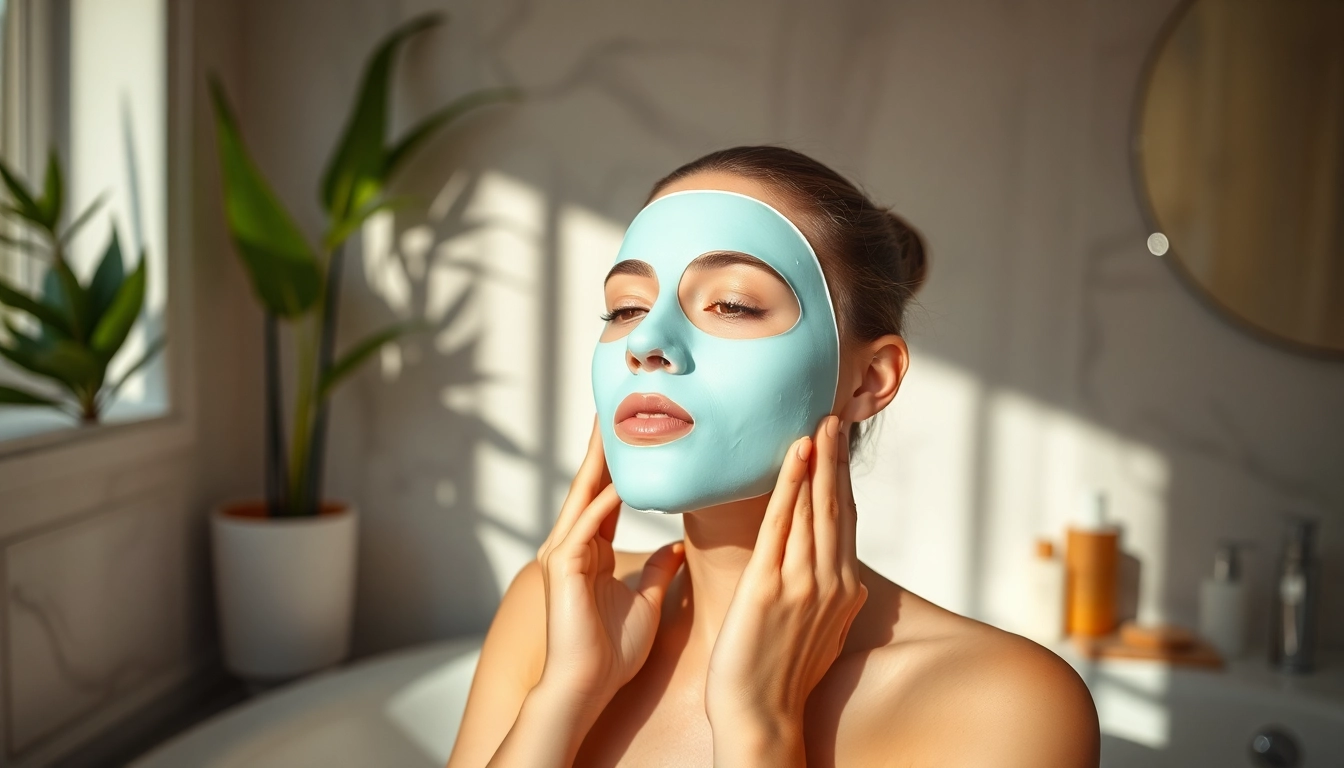Understanding Sheet Masks and Their Benefits
What is a Sheet Mask?
Sheet masks have surged in popularity over the past few years as an innovative skincare solution that delivers concentrated hydration and nutrients directly to the skin. Typically made from materials such as fabric, paper, or hydrogel, these masks are pre-soaked in a serum containing a variety of ingredients tailored to treat specific skin concerns. The beauty of a sheet mask lies in its ability to act as a protective barrier, allowing for deeper penetration of active ingredients while minimizing evaporation during the application process.
Key Ingredients to Look For
When selecting a sheet mask, pay careful attention to the ingredient list. Some key ingredients include:
- Hyaluronic Acid: This powerhouse hydrator draws moisture into the skin, making it a perfect choice for dry skin types.
- Vitamin C: Known for its brightening properties, Vitamin C helps even out skin tone and reduce signs of aging.
- Niacinamide: A form of Vitamin B3 that enhances the skin’s barrier function, niacinamide is excellent for oily and acne-prone skin.
- Collagen: This ingredient helps to improve skin elasticity and reduce the appearance of fine lines.
- Plant Extracts: Ingredients like aloe vera and green tea provide calming and anti-inflammatory benefits, perfect for sensitive skin.
Benefits of Using Sheet Masks
Sheet masks offer a plethora of benefits, including:
- Intense Hydration: They provide immediate and long-lasting hydration, which is essential for maintaining plump, youthful skin.
- Convenience: Easy to use at home or on-the-go, they require minimal effort for maximum results.
- Targeted Treatments: Available for various skin concerns, from dry skin to dull complexion, they allow users to customize their skincare routine.
- Quick Results: Many users notice improvements in skin texture and hydration levels instantly after use.
How to Choose the Right Sheet Mask for Your Skin Type
Identifying Your Skin Type
Before selecting a sheet mask, it is crucial to determine your skin type. Common skin types include:
- Oily Skin: Characterized by excess shine, this skin type benefits from masks that control oil and minimize the appearance of pores.
- Dry Skin: Lacking moisture, dry skin needs hydrating ingredients such as hyaluronic acid and glycerin.
- Combination Skin: This skin type is both oily and dry. Choose a mask that balances moisture and absorbs excess oil.
- Sensitive Skin: Look for fragrance-free and hypoallergenic options enriched with soothing ingredients like chamomile or aloe vera.
Ingredient Matching for Specific Concerns
Once you identify your skin type, match it with ingredients targeting your specific concerns. Here are some suggestions:
- Acne-Prone Skin: Opt for masks containing salicylic acid or tea tree oil.
- Dull Skin: Vitamin C and exfoliating acids can help brighten your complexion.
- Aging Skin: Masks that incorporate peptides or retinol will enhance skin firmness and elasticity.
Top Sheet Masks Recommendations
To get you started, here are some popular sheet masks that cater to various skin types:
- Neutrogena Hydro Boost Hydrating Sheet Mask: Ideal for dry skin thanks to its hyaluronic acid content.
- Innisfree My Real Squeeze Mask: Offers a variety of formulations for specific skin concerns and types.
- SK-II Facial Treatment Mask: A luxury mask enriched with Pitera™ that brightens and hydrates.
Step-by-Step Guide to Applying a Sheet Mask
Prepping Your Skin
For optimal results, proper skin preparation is key before applying a sheet mask. Consider the following steps:
- Cleanse: Start with a gentle cleanser to remove dirt, oil, and makeup.
- Exfoliate: Light exfoliation can help remove dead skin cells, allowing the mask to penetrate better.
- Tone: Using a toner can help balance your skin’s pH, setting the stage for the mask.
Applying the Sheet Mask Effectively
Once your skin is prepped, follow these steps to apply the mask:
- Unpack the Mask: Gently remove the mask from its packaging and unfold it.
- Align the Mask: Position the mask over your face, aligning it with your eyes, nose, and mouth.
- Press Down: Smooth the mask onto your face, ensuring it adheres well.
Aftercare: What to Do Post-Application
To maximize the benefits of the mask, don’t forget these aftercare tips:
- Remove the Mask: Peel off the mask and discard it. Avoid rinsing your face after using the mask to let the serum fully absorb.
- Follow Up with Moisturizer: Seal in the benefits by applying your favorite moisturizer.
Sheet Mask Frequency: How Often Should You Use Them?
Daily vs. Weekly Use
The frequency of sheet mask use can vary according to individual skin needs. While some people may benefit from daily use, others might find that one to three times a week is more appropriate. Factors influencing frequency include skin type, environmental stressors, and overall skin condition.
Signs You May Be Overusing Sheet Masks
It’s important to listen to your skin. Signs that you may be overusing sheet masks include:
- Increased sensitivity or redness.
- Breakouts or clogged pores.
- Skin feeling greasy or overly hydrated.
Seasonal Considerations for Masking
Your skin’s needs may change with the seasons. During winter, factors like dry air can lead to roughness and irritation, making hydrating masks essential. Conversely, summer might necessitate lighter, oil-controlling masks to combat excess sebum. Adjust your sheet mask routine accordingly to keep your skin balanced year-round.
Enhancing Your Sheet Mask Experience
Combining with Other Skincare Products
Sheet masks can be a great addition to your existing skincare routine. Incorporate them effectively by:
- Using them after your serums for added hydration.
- Pairing with your nighttime routine for overnight hydration.
- Following up with facial oils that seal in moisture.
DIY Sheet Mask Recipes and Tips
If you prefer a more personalized approach, creating your own sheet masks can be both fun and effective. Consider using ingredients such as:
- Aloe Vera Gel: Perfect for soothing and hydrating.
- Green Tea: Great for anti-aging and calming irritation.
- Honey and Yogurt: A natural remedy for moisture and brightening.
Simply soak a cotton sheet in your chosen mixture, apply it to your face for 15-30 minutes, and enjoy the spa-like experience.
Common Mistakes to Avoid
While using sheet masks can be straightforward, some common pitfalls can undermine their effectiveness:
- Not Reading Labels: Always read the ingredient label to avoid allergens or irritants.
- Using Masks on Unprepared Skin: Skipping cleansing or exfoliation can limit results.
- Leaving Masks on Too Long: Following instructions is crucial; exceeding recommended time can have adverse effects.









